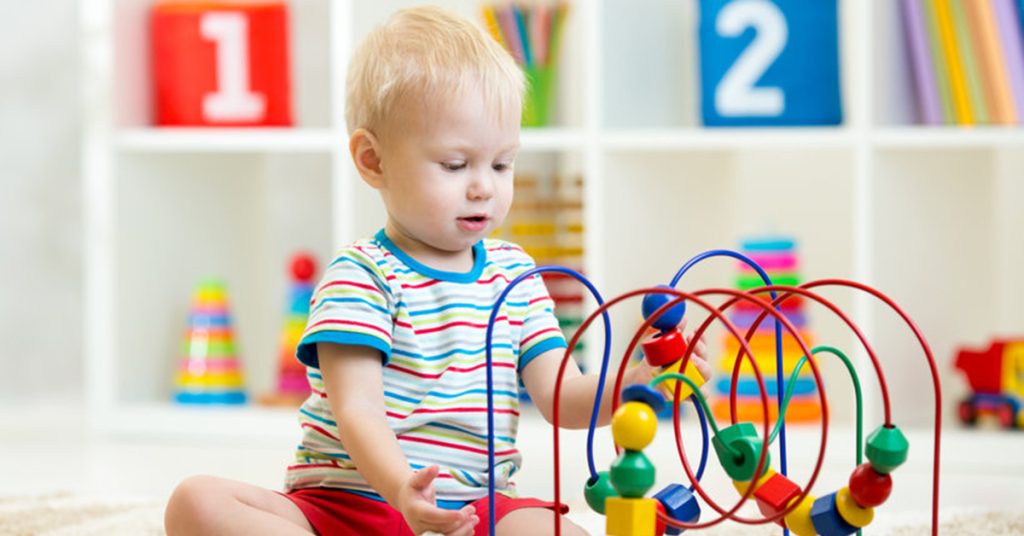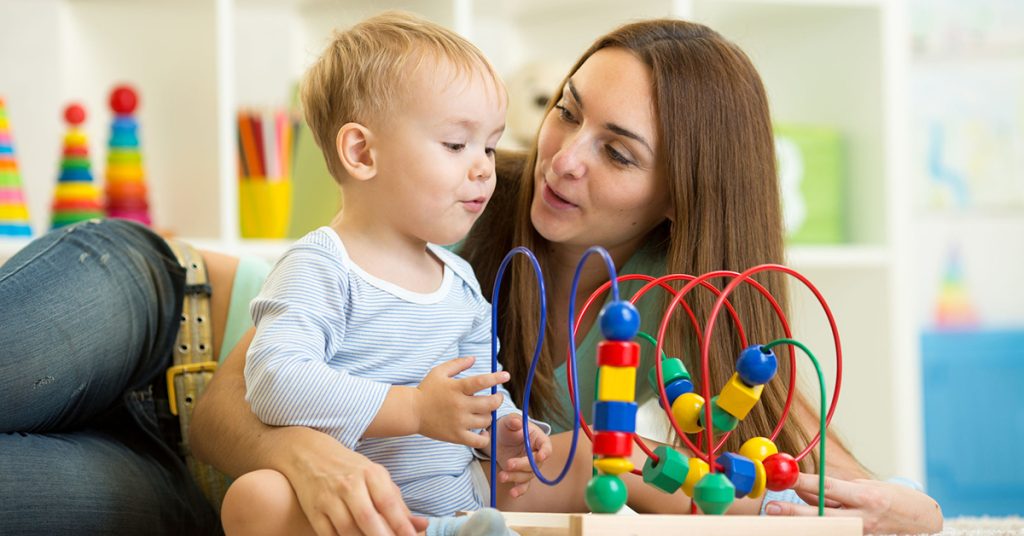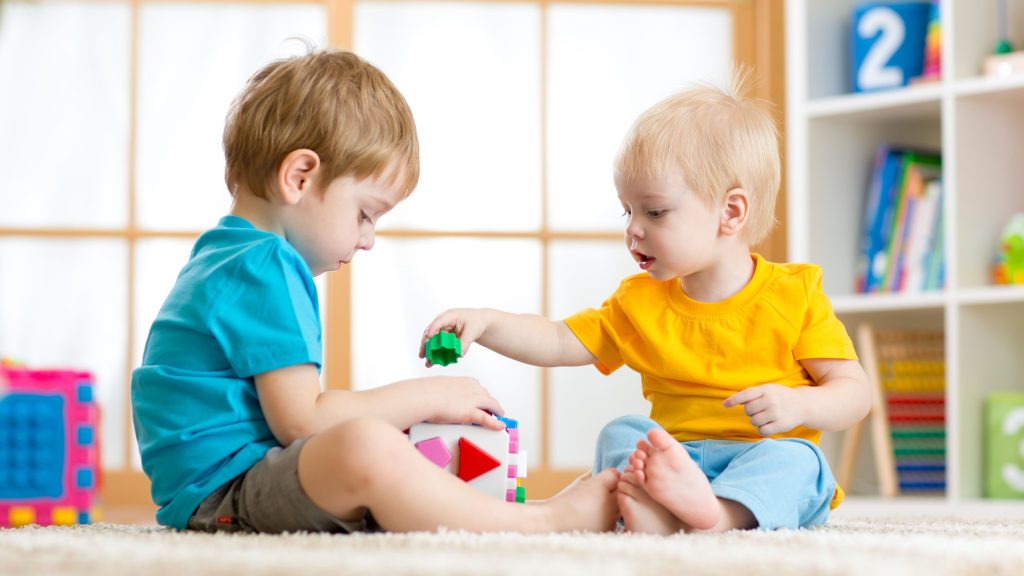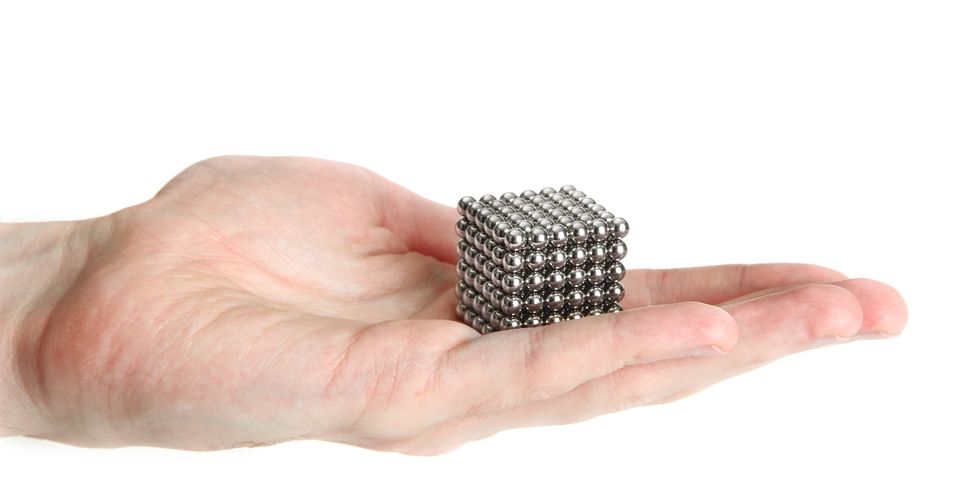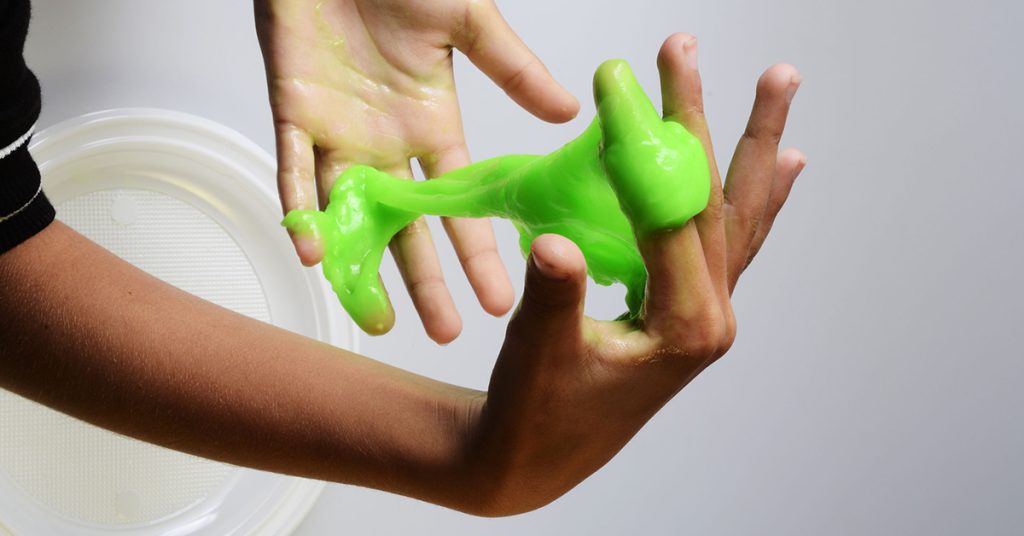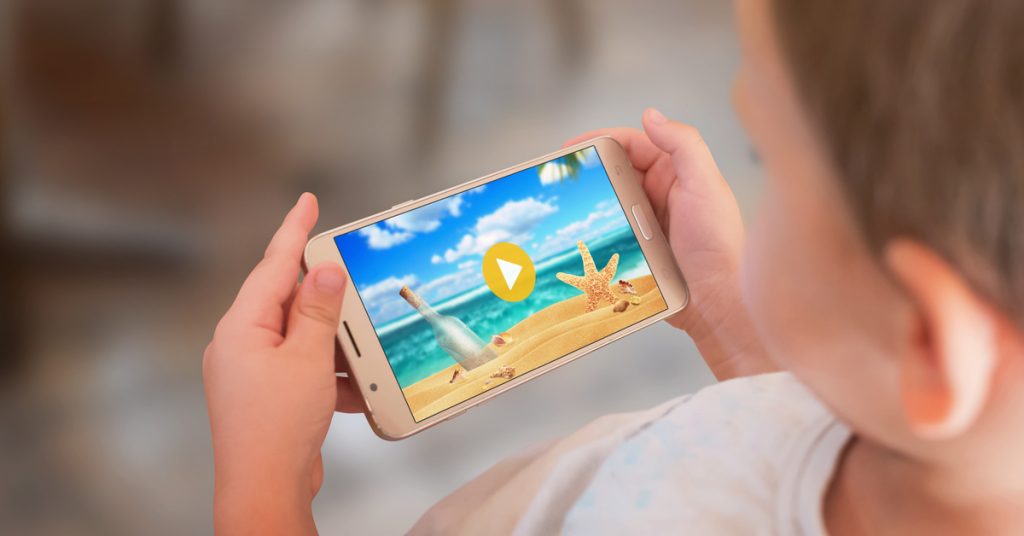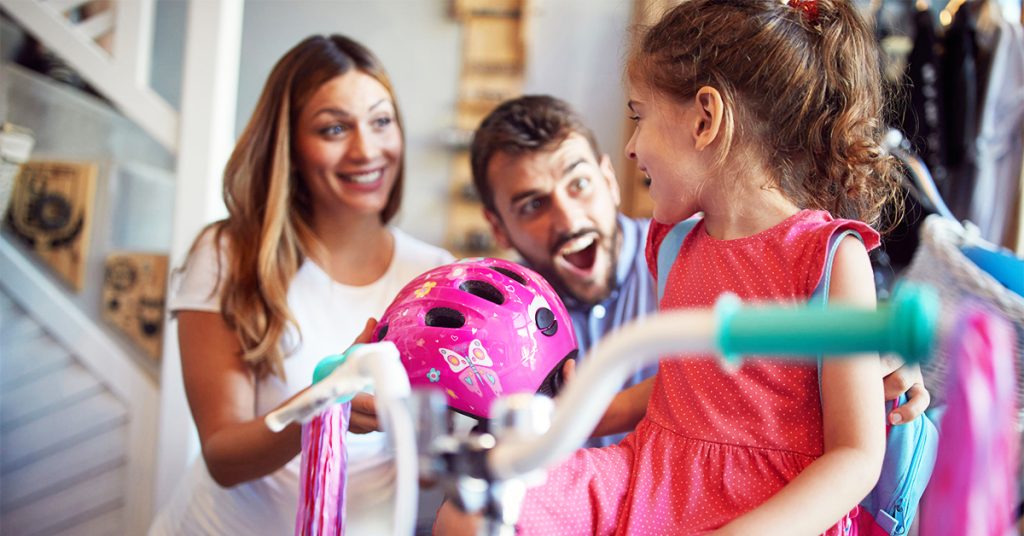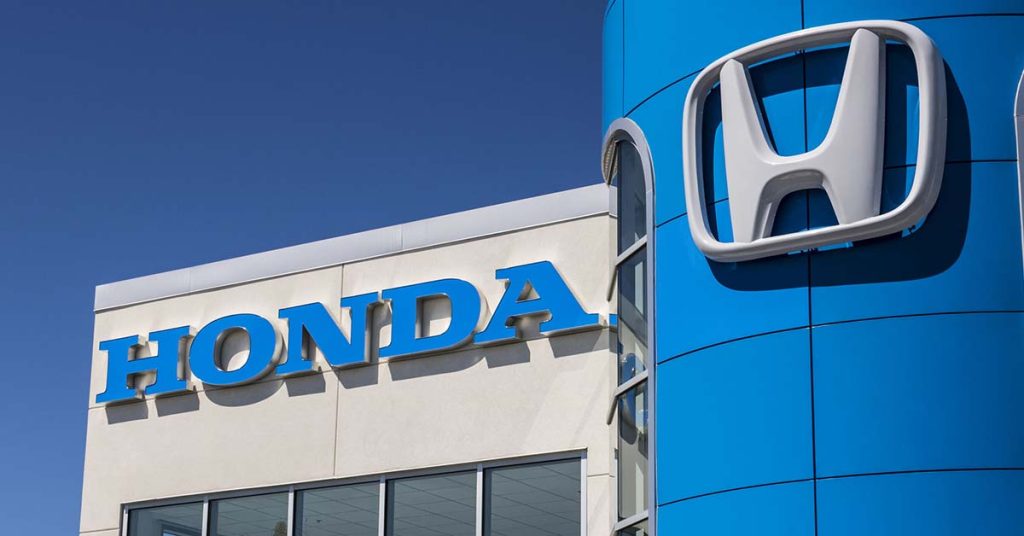Toy Recalls and Safety
Don’t Rush; Reminders to Help Massachusetts Families Buy Safe Holiday Toys in 2021
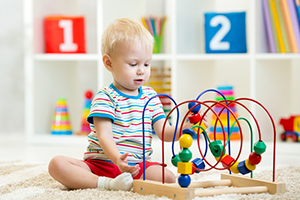
Don’t rush your holiday toy shopping. Take time to read and follow age-appropriate labels before you buy toys.
Many of us are feeling quite stressed about holiday shopping as we watch the news. Still, when you shop for a child, safety is essential. Slow down and look for a fun, safe and age-appropriate toy that will bring joy, not injury, into your home.
Read Age-Appropriate Warning Labels, Toy Packaging and Online Descriptions
You may think you are buying a safe because the toy was featured on a morning news program or has received top reviews online. But despite your best intentions, you may not actually be purchasing the same toy. To avoid buying a so-called counterfeit toy, look for reputable sellers, such as department stores. Try to purchase from brick-and-mortar stores.
Before purchasing or at home, closely examine the packaging on the toy and make sure it matches the manufacturer’s online description. If you purchased the toy online, the toy packaging should also match the description on Amazon or the online marketplace. Once the toy arrives, open and inspect the box contents.
Everything should be consistent, including the age-recommendation labels.
Check for Toy Recalls
The packaging is a tool to help you shop, as is the CPSC website, which you can check for toy safety recalls. In addition to recalling toys, the CPSC has also recalled many inclined infant sleepers over the past two years. Last summer, the commission approved a new federal safety standard for infant sleep products which will take effect in mid-2022. Here is one of our recent blogs on infant sleep products.
U.S. Toy-Related Injuries and Deaths by Age 2018-2020
No one wants to think about the possibility of a child suffering an injury while playing with their own toys. Yet this is a risk in when so many toys are sold online through Amazon, Ebay and other online marketplaces. Independent sellers can sell on these sites or quickly build their own websites, optimize them in the search engines, then close sites down.
Between 2018 and 2020, 50 children were killed in toy-related accidents across the U.S., according to CPSC data released in May 2021. Many children suffered suffocation and other injuries in accidents involving toys with small parts, balls, stuffed animals or accessories. Two children drowned on water toys. Seven children died in accidents involving non-motorized scooters and two were killed on nonmotorized riding toys.
In 2020, nine children were killed and nearly 150,000 children age 14 and younger were treated for toy-related injuries in hospital ERs. Here is a breakdown of toy-related injuries by age during 2020:
- Children under 5 suffered 40 percent of all toy-related injuries.
- Children age 12 and younger suffered 73 percent of toy-related injuries.
- Children age 14 and younger suffered 75 percent of toy-related injuries.
Common Toy Shopping Mistakes
As we have discussed, you can reduce the risk of injury in your household by reading age recommendations and carefully inspecting toys and packaging. But you can also challenge yourself if you have these thoughts:
Buying Holiday Toys Because Just They Are Available or Priced Right
Earlier this month, the Toy Association shared positive news: 76 percent of parents surveyed said they read age recommendations before buying toys.
However, many can be swayed. About 65 percent of parents said they may buy a counterfeit/knock-off toy if their first choice was unavailable. Meanwhile, 63 percent said they could be influenced by a lower price.
Buying Outside Age-Recommendations for Toys
“This toy is marked age 8 and older, but my 5 ½ year old is up for challenging toys .” Sound familiar? The Toy Association reports 68 percent of parents share this thought and would buy a toy outside age recommendations.
Consider age-recommendation labels an important tool, designed to protect your child from choking, an eye or head injury or a broken bone. Age recommendations are not arbitrary; they are based on a toy’s performance under federal toy safety requirements.
For example, toys with small parts or balls have to undergo the “small parts cylinder” test. The cylinder has a diameter of 1.25 inches, with a slanted bottom opening 1 to 2.25 inches. If a toy or small part passes through the cylinder, it has to carry an age-warning label that states, “Choking Hazard – Small Parts. Not for Children Under 3 Yrs.” Read more about the small parts regulations for toys.
Read more in our Project KidSafe toy safety series.
Free Legal Consultation – Boston Product Liability Attorneys
Founded in 1992, Breakstone, White & Gluck has recovered millions of dollars in compensation for victims of negligence and wrongdoing in Massachusetts. Consistently recognized by Super Lawyers and Best Lawyers, our personal injury lawyers specialize in product liability, holding companies responsible for injuries and wrongful death caused by defective products, toys and vehicles.
Breakstone, White & Gluck is located in 2 Center Plaza in Boston, across the street from the Government Center T stop and Boston City Hall. If you have been injured, Breakstone, White & Gluck offers a free legal consultation. Learn your legal rights by calling and speaking with one of our attorneys today at 800-379-1244 or 617-723-7676 or use our contact form.
How to Avoid Buying a Recalled Toy or Product This Holiday Season
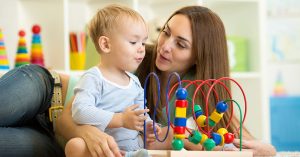 When a product is recalled, you may expect it will be removed from store shelves or online marketplaces. This is not always a safe assumption. In this year’s Trouble in Toyland report, U.S. PIRG reports several toys which were recalled this year were still being sold afterward on popular websites. Last year, a Wall Street Journal investigation found Amazon was selling thousands of unsafe or banned products.
When a product is recalled, you may expect it will be removed from store shelves or online marketplaces. This is not always a safe assumption. In this year’s Trouble in Toyland report, U.S. PIRG reports several toys which were recalled this year were still being sold afterward on popular websites. Last year, a Wall Street Journal investigation found Amazon was selling thousands of unsafe or banned products.
These are upsetting headlines. The Consumer Product Safety Commission (CPSC) recalls toys when they pose a safety hazard to children. Recalls are typically only called after a report or several reports of injuries or near injuries.
Once a toy is recalled, consider it unsafe to use. Our Boston product liability lawyers share our safety tips for steering clear of unsafe toys this holiday season:
Look Up Past Toy Recalls
Visit the CPSC website and review product recalls for 2020. According to U.S. PIRG, 10 products were recalled in the 12 months between the release of its 2019 and 2020 report.
You can visit this website after you have selected a toy and before you make a purchase. Or it may be helpful to start your holiday shopping there. Search for “toy recalls” or look through all the product recalls. Note that this website does not include automobile recalls. You can find these on the National Highway Traffic Safety Administration (NHTSA) website.
Beware of Amazon, Ebay and Marketplace Websites
Some retailers only offer their own products online. Others – such as Amazon and Ebay – are marketplaces where different vendors sell products and toys. These products may be new or they may be used.
Both the sellers and websites have a responsibility to make sure they are not selling recalled products.
In August 2019, the Wall Street Journal reported that Amazon was selling more than 4,000 items which federal agencies had declared unsafe or banned. Others had misleading labeling. At least 2,000 listings were for unsafe toys and medications.
The story showed the challenges Amazon has regulating its own marketplace. If you shop on Amazon or EBay, look for information about the seller. Is a company the seller or an individual? If you have never heard of the seller, you may not want to make a purchase.
Watch for Small Parts
When buying online, one potential danger is buying a toy which contains small parts. To protect your children, always read age recommendations and look for warning labels.
Toys which are designed for children under age 3 should be labeled if they contain small parts. Toys for children age 3 to 6 must also be labeled if they contain small parts. Read our blog on identifying small parts and toy safety warnings.
Beware of Purchasing Toys on Social Media Sites
You may have heard of Facebook Marketplace or other social media sites where you can sell used toys and products. Avoid buying used toys for children here during the holidays. We also suggest you avoid buying toys from these sites during other seasons, but especially during the holidays when many of us just wait for online sales to pop up.
There is no quality control. In most cases, the product is no longer in the packaging so you can’t read the safety warnings and age recommendations.
If you buy a used product this way, you really have no way of knowing when it was purchased. You may not have a product number or product instructions.
Children’s products, such as cribs, car seats and strollers, may carry the greatest risks. These products are frequently recalled and many model types look similar. While it is illegal to sell recalled products, it happens.
One frightening story came after Fisher Price and Kids II issued their crib recalls in early 2019. Despite this, 1 in 10 daycares was still using a Fisher Price Rock n’ Play sleeper in August 2019. In Nov. 2019, Consumer Reports reported found hundreds of the recalled sleepers available online, on sites such as Craigslist and Facebook Marketplace. In addition, Consumer Reports warned other products – including Ikea dressers recalled in 2016 were still being sold.
Free Legal Consultation – Boston Toy Safety Lawyers
With more than 100 years combined experience, Breakstone, White & Gluck of Boston specializes in the representation of clients injured by unsafe or defective toys and products. We are writing about toy safety this holiday season to help parents and families make safe shopping decisions. Read our past toy safety blogs.
For a free legal consultation, contact the Boston toy safety lawyers at Breakstone, White & Gluck at 800-379-1244 or 617-723-7676. You can also use our contact form.
Trouble in Toyland Report Shares Toy Safety Tips for Holiday Shoppers
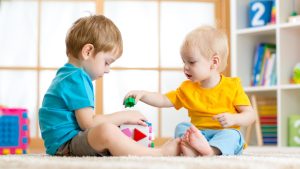 Families often enjoy looking through toy catalogs together this time of year. After seeing what excites your child, you may be tempted to immediately order their holiday gifts. However, before you do, we encourage parents and grandparents to check the Trouble in Toyland report.
Families often enjoy looking through toy catalogs together this time of year. After seeing what excites your child, you may be tempted to immediately order their holiday gifts. However, before you do, we encourage parents and grandparents to check the Trouble in Toyland report.
The 35th anniversary Trouble in Toyland report was recently released. This year, U.S. PIRG warned about the dangers of:
- Mislabeled choking hazards
- Flocked animal figures (toys with small attached pieces)
- Recalled toys which may still be available online
- Noisy toys
- In-app purchases
- Not advisable for children
Choking Hazards
Parents are advised to look for small part warnings on toys. “Small part” is not a subjective term. It is anything that fits within the Consumer Product Safety Commission’s toy test cylinder. The test cylinder measures 2.25 inches long and 1.25 inches wide and is roughly the size of a young child’s throat. A small part may be a game piece or a marble of the right size. It may also include a toy accessory, such as doll clothing.
The most common “small parts” warning: “WARNING: CHOKING HAZARD–Small Parts. Not for children under 3 years.” Toys designed for children ages 3 through 6 must also carry warning labels indicating they are not safe for children under 3.
Parents can become familiar with the risks by reading this year’s Trouble In Toyland. Make it a priority not to purchase a product with small parts and bring them into your home. Always read toy safety and age appropriate labels. Doing so puts you on a path to protect your family.
Flocked Toys
If you purchase a toy figurine or doll that comes with accessories, such as ribbons or clothing, remember your child can put those small parts in their mouths. Calico Critters – the popular animal family figures – are now under scrutiny.
One child was killed while playing with a set containing a small pacifier in New Mexico, according to a court filing. Another child in Utah also choked on the pacifier accessory, according to the a local news website, and shared in the Trouble in Toyland report. Both children were under 3 years old.
Fortunately, there are many versions of toys. If you find a toy you like and it has small fabric parts, keep looking until you find one without removable accessories.
Online Toy Shopping
Trouble in Toyland shared a valuable insight about searching for holiday toys on Amazon. If you search for “toys for 2-year-old boys,” for instance, you may see a number of listings which do not provide a small part warning. Do not trust that searching by year means toys are screened for safety. Remember, Amazon is a marketplace of merchants, not just one company. Closely look at product descriptions before making a purchase. In addition to reading reviews, you want to confirm the details. Look at the product picture, then read the description. Double check the product packaging once it arrives by mail and open it to confirm it has the parts you expected.
Beware of recalled toys as well. Since the 2019 Trouble in Toyland, the Consumer Product Safety Commissioned issued 10 toy recalls in the U.S., according to this report. When a product is recalled, it should be immediately removed from the store shelves and online listings. Some toys were still being sold online after recalls. Researchers even found one toy – a Fisher-Price Barbie Dream Camper which was recalled in February 2019 – still on sale. The camper was an outdoor riding toy for children. The CPSC received 17 reports of campers continuing to travel after the foot pedal was released.
Not Advisable For Children
Also featured was a section called, “items not advisable for children.” These items are not really toys, but are given to children as toys. At the top of the list is high-powered magnet desk sets. We wrote about the dangers of high-powered magnet sets last holiday season. Magnet sets may seem like fun gifts for adults, but you should never purchase one because they are so dangerous and the small parts can stick around your home forever. Children can be tempted to play with these magnets and swallow them. At this point, the magnets can attempt to connect together in a child’s stomach. The magnets touched on some serious personal injuries.
In September 2020, a 9-year-old boy took two magnets from a Neutronball building set and placed them on his lip, pretending to have a piercing. He then swallowed them and had to seek medical treatment at a hospital. In May, another 9-year-old swallowed parts from a Zen Magnets LLC set. She hid this from her parents for a week, until she began suffering intense stomach pain. She required surgery, but survived.
Beware of Digital Apps
Parents may be asked to sign up for an app related to a “smart toy” their child received as a gift. Or a child may have received a tablet or cell phone and try to sign up for apps themselves.
While there is a case to be made for limiting your child’s screen time overall, beware of giving your child access to digital apps. These can be tempting and children may like the graphics and thought of winning a prize. The Trouble in Toyland report mentioned one app called Coin Master. This is rated for ages 13 and over, though the graphics may easily capture the attention of a younger child.
We are sharing this story because Coin Master offers in-app purchases. The most expensive option is $99.99. Children may only see higher options once they get into the game.
Free Legal Consultation – Boston Toy Safety Lawyers
Breakstone, White & Gluck has over 100 years combined experience representing individuals who have been injured by the negligence or wrongdoing of others. Our firm is highly experienced in the area of product liability and injuries caused by defective products. We are writing about holiday toy safety as part of our Project KidSafe campaign, where our goal is to protect children from injuries. For the past 8 years, our attorneys have also donated 30,000 bicycle helmets to children across Massachusetts to protect against head injuries.
If you have been injured, learn your legal rights. For a free legal consultation, contact Breakstone, White & Gluck of Boston at 800-379-1244 or 617-723-7676 or use our contact form.
Voluntary Safety Standard Unlikely to Prevent Children’s Magnet Injuries, Advocates Warn
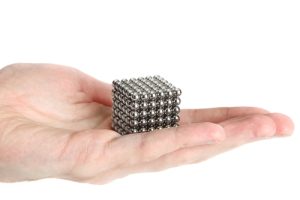
There is a disturbing new report out about children ingesting rare-earth magnet sets at an accelerated rate since 2016, when the industry overturned a federal sales ban in court. The magnet industry now markets these powerful cluster sets to adults, but children continue to swallow them. Parents can take precautions by double checking holiday gifts and discarding any of these products.
The Consumer Product Safety Commission (CPSC) issued a rule banning the small rare-earth magnet sets in 2014 after hundreds of children reportedly ingested the magnets. The rare-earth magnets were (and still are) about 10 times as strong as other magnets. The CPSC’s ban required magnetic parts to have a lower force of attraction of 50 kG² mm² or less.
According to The Washington Post, child ingestions had dropped after the ban was implemented. Injuries dramatically rose between 2017 and 2019, with an estimated 1,580 ingestions this year.
Magnet makers are now working to establish a voluntary safety standard to avoid future attempts at regulation. With the committee votes due in January, The Washington Post reports safety warnings may be added, but actual product changes are unlikely.
The Washington Post reported on many aspects of the process, including:
Voting members. The ASTM International organization oversees the process for creating voluntary safety standards for consumer products. The committee set to vote includes safety advocates and magnet industry officials or those with ties to the industry. CPSC staff is involved, but do not lead the process.
One potential issue is the number of voting members has shifted recently from 36 to 33, according to The Washington Post. The magnet industry can only represent 49 percent of the vote according to ASTM guidelines, but the industry and members with ties to the industry accounted for 55 percent of the vote when the story was published. The newspaper also reported some of the voting members were incorrectly categorized.
No agreement on magnet size. Some of the committee members want to make the magnets too large to swallow and/or decrease the strength to reduce the risk a child’s risk of organ damage. These committee members asked about increasing the magnet size to 1.25 inches in diameter. This would fall more into line with the federal “small parts” law which requires toys to carry a choking hazard warning if any parts fit through a cylinder with this diameter. The bottom of the testing cylinder is slanted, opening 1 to 2.25 inches. The choking hazard warning must also state, “Not for children under 3 yrs.”
Industry officials oppose, saying the proposal would make the tiny magnets six times as large and also increase the magnet force.
The ballot calls for adding new safety warnings on packaging and a change so consumers can visually check that all the advertised magnets are inside the box. There are no other changes.
While a voluntary safety standard should improve safety, a CPSC commissioner told The Washington Post the process can actually cost lives. Rare-earth magnets are just one story when change isn’t about protecting children, but protecting an industry. As a consumer, take time to really read just what the safety warnings and labels say.
The CPSC offers an online database for product recalls and updates. You may find advisories associated with certain types of products before a formal recall occurs. Other organizations – such as Consumer Reports, the American Academy of Pediatrics and Safe Kids – also publish valuable information and insights. Subscribe to newsletters and learn as much as you can about shopping for children’s products and toys.
Breakstone, White & Gluck shares product recalls on our blog and Facebook page. Read more about rare-earth magnets and magnet gifts for children in our recent blog, “Keep Magnet Toys Off Your Holiday Shopping List.”
About Breakstone, White & Gluck – Boston Product Liability Lawyers
With more than 100 years combined experience, Breakstone, White & Gluck has expertise in handling all types of product liability claims, including those involving defective consumer products, dangerous toys, unsafe vehicles and hazardous medical devices. Our Boston product liability lawyers represent clients who have been injured by negligence throughout Massachusetts, from Boston to Plymouth to Cape Cod, Worcester, Western Massachusetts and the North Shore.
For a free legal consultation with one of our attorneys, call us today at 800-379-1244 or 617-723-7676. You can also use our contact form.
Worst Toys of 2019 List Showcases Holiday Hazards
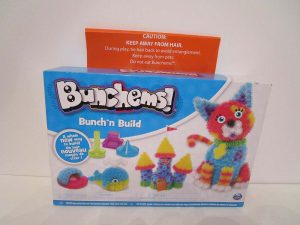
Photos: Worst Toys of 2019, W.A.T.C.H.
The Worst Toys of 2019 list has been released, providing parents and grandparents a preview of toys to avoid this holiday season. We urge you to read this list before you shop. Each toy mentioned has caused injury or has grave potential. We want Massachusetts families to steer clear and enjoy a safe and happy holiday season.
As you read, remember there are just 10 spaces on the Worst Toys list, which is compiled by W.A.T.C.H. – or World Against Toys Causing Harm, Inc. Yet there are far more toys out there which may be unsafe or inappropriate for your child’s age. Read our blog on the Worst Toys list, to help you identify common features in unsafe toys, such as small parts which could cause choking injuries.
Toy injuries are a daily risk for many families in Massachusetts, not just during the holidays. Across the country, 251,700 people suffered toy-related injuries in 2017. From 2015 to 2017, 37 children died while playing. These devastating numbers are preventable if manufacturers, distributors and retailers safely handle products throughout the supply chain. Parents can do their part by always reading and following age recommendation labels. Remember you also have help on this front. You can check the Consumer Product Safety Commission’s website for product warnings and recalls before you shop this holiday season, and throughout the year. You can also sign up for e-mail alerts.
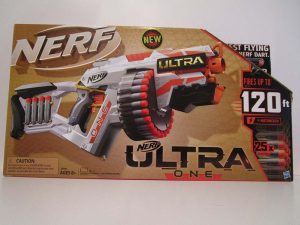 1- Nerf Ultra One
1- Nerf Ultra One
Though it looks like a blast, this Nerf toy is a $49.99 danger, W.A.T.C.H. says. The dart blaster shoots up to 120 feet and claims to be the “Farthest Flying Nerf Dart. Ever.” It carries an age recommendation of 8 and up, with several troubling warnings. W.A.T.C.H. reports the darts can be shot with enough force to cause eye injuries.
2 – Spike the Fine Motor Hedgehog
Spike is a risky toy because he comes with 12 removable quills, all 3 ½ inches long, W.A.TC.H. The problem is the packaging carries an age recommendation of 18+ months. This is deceptive, leading parents into conclude this is a safe toy for young children of that age. The age recommendation should be higher and carry a choking hazard label.
3 – Bumchems Bunch’N Build
These building toys stick together and make cute formations. What’s not cute is how they can get caught in your child’s hair. The manufacturer is clearly aware of this potential, advising parents to keep their child’s hair pulled back to avoid entanglement. Although they continue selling it, you don’t have to buy it. Carefully consider how your child and what could happen if you leave the room for a moment.
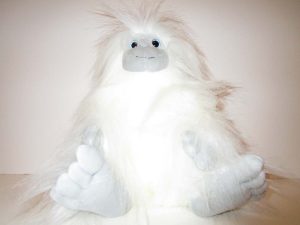 4 – YETI
4 – YETI
Pull at this doll’s white fur and with little effort, it becomes loose. Then it gathers, creating a choking hazard. The $21 toy is being sold everywhere this year, including Walmart.com, Target.com and Amazon.com. W.A.T.C.H. critically notes the toy has a recommendation of 24 months and up – on a removable sticker. Once this sticker comes off, consumers have to guess at the appropriate age.
Age recommendations are the most fundamental tool parents have in choosing safe toys. A removable label makes it hard to make safe choices, especially if you are handing the toy down between children.
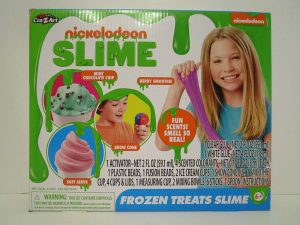
5- Nickelodeon Frozen Treats Slime
What can we say about this $9.99 slime toy? Or is it food? The truth is, it is a chemical which if ingested, can seriously harm your child. The confusing part is this slime really looks like a frozen treat on the box.
We urge you not to buy slime mixtures or any type of pretend food. There are plenty of other gift options. Traditional crafts such as drawing sets or even Play Doh are better choices. They don’t require any mixing of ingredients.
6 – Anstoy Electronic Toy Gun
W.A.T.C.H. is always critical of marketing realistic toy guns to children and has highlighted the practice over many years. This year it says the Anstoy electronic gun is being unsafely marketed for children age 14+ and can be found online by anyone with an Amazon account. We agree: steer clear of guns and choose toys which involve sports. A soccer ball, basketball or a new snowsled sound like great gifts to us!
7 – Diecast School Bus
This miniature school bus is a choking hazard because the small rubber tires can become loose. They are mounted on plastic wheels and can be pulled apart. So many toys have similar hazards and should be kept out of homes with younger children.
8 – Pogo Trick Board
This toy is a “high bounce ball” with dual handles for “tricking out.” The age recommendation is children 6 and up. The manufacturer warns children to wear a helmet to protect against head injuries. But the packaging shows two children using the board without a helmet. There is one child bouncing high while wearing a helmet, but overall, there’s not a strong advisory to parents.
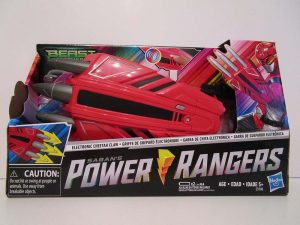 9 – Power Rangers Electronic Cheetah Claw
9 – Power Rangers Electronic Cheetah Claw
“Do not hit or swing at people or animals.” “Use away from breakable objects.” Finally, this toy carries a small parts warning, even though the age recommendation is 5+.
With so many warnings, why would you want to buy this toy? It may look cool to your child, but you have to remember it’s winter in Massachusetts. This is not a toy you want your child swinging around your home. Hasbro, the manufacturer, says the toy can cause potential eye or facial injuries.
10 – Viga Pull Along Caterpillar
This is an adorable toy, but it made the W.A.T.C.H. list because of its long string. This could cause a potential choking or strangulation hazard. The Viga Pull Along Caterpillar is a pull toy and should have a warning to go with its 24-inch cord.
Read more from the Worst Toys of 2019 on the W.A.T.C.H. website.
About Breakstone, White & Gluck – Free Consultation
Boston Product Liability Lawyers – Boston Defective Toy Lawyers
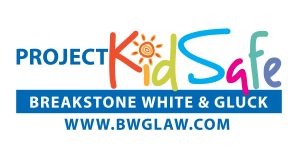 Breakstone, White & Gluck is experienced in representing those injured in Massachusetts in cases involving product liability and defective products. Manufacturers have a responsibility to conduct safety testing and properly label toys with age recommendations. When they neglect this responsibility, toys are not safe to use.
Breakstone, White & Gluck is experienced in representing those injured in Massachusetts in cases involving product liability and defective products. Manufacturers have a responsibility to conduct safety testing and properly label toys with age recommendations. When they neglect this responsibility, toys are not safe to use.
We share this blog as part of our holiday toy safety series and our Project KidSafe campaign. Learn more about Breakstone, White & Gluck and our work for clients on our website.
Take Caution Buying Children Digital Toys, Tablets and Apps
 Many children are asking for tablets, video games and digital toys this holiday season. Before you buy, really learn what you are introducing – and our suggestion is consider waiting. This year, companies such as Google were pressured to change their data collection practices. In 2020, we may just see some change from other companies, too. Read More
Many children are asking for tablets, video games and digital toys this holiday season. Before you buy, really learn what you are introducing – and our suggestion is consider waiting. This year, companies such as Google were pressured to change their data collection practices. In 2020, we may just see some change from other companies, too. Read More
Buying Your Child a New Bike, Scooter or Snowboard This Holiday? Don’t Forget the Safety Helmet

Give the gift of safety. Always give a helmets to go with new bicycles, scooters and other riding toys.
It is a lot of fun to select a new bicycle or scooter for a child during the holiday season. But when you buy, remember to pick up a new helmet, too. This is a critical tool in protecting against head injuries and under Massachusetts law, children 16 and younger are required to wear helmets on bicycles, scooters, skateboards and inline skates.
Massachusetts Bicycle Helmet Law: Children 16 and younger are required to wear bicycle helmets when they ride bikes in Massachusetts, under M.G.L. c. 85, § 11B.
Massachusetts Scooter Helmet Law. M.G.L. c. 85, § 11B1/2 states children 16 and younger must also wear safety helmets on scooters, skateboards and inline skates, as well as other manually-propelled wheeled vehicles.
Helmet Buying Tips: Spotlight on Bike Helmets
Buy a bicycle helmet which meets the safety standards set by the U.S. Consumer Product Safety Commission (16 C.F.R. part 1203). This standard is specifically designed to protect a child’s head with shock-absorbent material in bicycle accidents or falls. It requires chin traps be strong enough to keep the helmet in position on the head.
Buy a helmet separately from your bike. You may find it helpful to buy a helmet separately. To get started, measure around your child’s head with a cloth tape measure. Measure just above your child’s eyebrows. Start looking now online or visit your local bicycle shop.
Stick to traditional bike helmets. The CPSC discourages parents from buying helmets with decorative and costume pieces, such as horns or parts which protrude from the helmet. These will interfere with the helmet’s ability to protect a child’s head should they ever hit the ground.
How long has your child been wearing that helmet? If your child has been wearing a helmet for three years, this is a good time to buy a new one. But depending on your child’s growth and wear and tear, you may want to replace it sooner. Carefully inspect the helmet on the inside and outside.
Buy an adjustable helmet. Because children grow fast, we suggest an adjustable helmet which can be tightened or loosened in the back.
Helmets Designed for Other Activities
Safety helmets are designed for certain purposes. Each sport and activity involves a different impact.
But bicycle helmets can often be used for recreational in-line skating, roller skating or manual kick scooters, according to the Consumer Product Safety Commission’s (CPSC) helmet guidelines. Check these guidelines whenever you buy a helmet.
Talk to your child’s sports coach about helmet guidelines for football, hockey, lacrosse and baseball.
Get your helmets ready for the winter. Helmets are recommended for skiing, snowmobiling, snowboarding and snow tubing. Many skiers say helmets interfere with their peripheral vision and response time. If this is your thought, consider reading this New York Times blog on just how much protection they can provide.
Before we close, another point is there are times when children should definitely NOT WEAR HELMETS, including at the playground or when playing at home. Helmets and straps can get caught and strangle a child on staircases and step ladders.
CPSC Guide – “What Helmet for Which Activity”
Helmets are essential to protecting your child. Here is the CPSC’s Guide, “Which Helmet for Which Activity.” This guide provides you with recommended safety standard guidelines for different activities, so it’s definitely worth bookmarking. Another helpful site is the CSPC recalls website, which you can search for product recalls before you make a purchase.
About Breakstone, White & Gluck
Boston Personal Injury Lawyers – Toy Safety Lawyers
 At Breakstone, White & Gluck, our lawyers are consistently recognized for their awards for clients in personal injury, medical malpractice and product liability cases. Through our Project KidSafe campaign, we work to promote bicycle safety and the well-being of children in Massachusetts. To date, we have donated over 25,000 bicycle helmets to children across the state.
At Breakstone, White & Gluck, our lawyers are consistently recognized for their awards for clients in personal injury, medical malpractice and product liability cases. Through our Project KidSafe campaign, we work to promote bicycle safety and the well-being of children in Massachusetts. To date, we have donated over 25,000 bicycle helmets to children across the state.
If you are shopping for a child, we invite you to read more of our holiday toy safety series.
Holiday Toy Safety: Check for Age Recommendations and Choking Hazard Labels
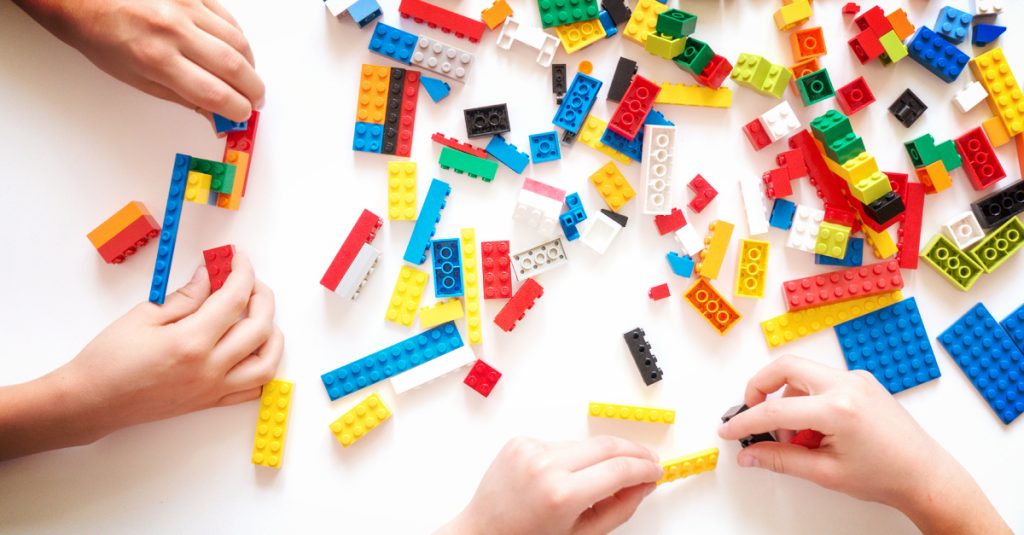 Age recommendation labels are the first tool you have in selecting safe holiday toys. Anyone purchasing toys for young children wants to familiarize themselves with the choking hazard-small parts label.
Age recommendation labels are the first tool you have in selecting safe holiday toys. Anyone purchasing toys for young children wants to familiarize themselves with the choking hazard-small parts label.
Warning: Choking Hazard – Small Parts. Not for Children Under 3 Years
Each year, children suffer choking injuries and deaths after consuming food or putting small objects in their mouths. In the late 1970s, the Consumer Product Safety Commission (CPSC) led a three-month study of an estimated 3,800 injuries involving children under age 10. It was determined that children under age 3 suffered more than half of all these injuries. More than 50 children under 3 died in accidents involving small parts.
With those numbers, the CPSC announced the small parts regulation, which became effective on January 1, 1980. Since then, toy manufacturers have been required to test toys and parts using the small parts cylinder test.
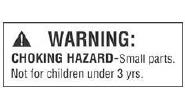
This cylinder has a diameter of 1.25 inches. The bottom of the cylinder is slanted, opening 1 to 2.25 inches. Toys which fall through the cylinder must carry the choking hazard – small parts warning and state not for children under 3 years old. Toys may also require labels if they fit through the tube, but break it during subsequent “use and abuse” testing (Source: U.S. PIRG, Trouble in Toyland 2018).
Toys which are too large can be sold without the choking hazard label, though they may require another type of labeling.
Small Parts Warning for Children Between Ages 3 and 6 Years
Any small part intended for children between age 3 and 6 must carry the same labeling: “Warning: Choking Hazard — This toy is a small part. Not for children under 3 years.”
Small Parts Warning – Small Balls
There is a separate federal standard for small balls, according to U.S. PIRG. Balls with a diameter of 1.75 inches are banned for children younger than 3 years of age.
Small balls must carry this age-recommendation label: “Warning: Choking Hazard — This toy is a small ball. Not for children under 3 years.” A similar label is required for toys which contain small balls: “Warning: Choking Hazard–Toy contains a small ball. Not for children under 3 years.”
Toymakers are required to test and use age recommendation labels. All toys intended for children age 12 and younger must undergo third-party testing and meet the most recent version of the federal safety standard, ATSM F963.
But there are times when parents and anyone buying a toy should be skeptical. Toymakers have made errors in labeling and there can be miscommunication between manufacturers and retailers when toys are displayed without packaging. Online product descriptions may not be accurate.
Remember These Toys Have Small Parts!
- Marbles
- Magnets
- Game pieces (such as the Monopoly characters)
- Legos and building bricks
- Small puzzle pieces (and cardboard pieces are a danger because small children can chew them and choke)
- Button batteries
- The clothing and parts on stuffed animals and dolls
- Pens and pencils with caps which can become loose
Additional Toy Safety Standards for Children Age 3 and Younger
While we are talking about small parts, we also want to remind parents of other federal toy safety guidelines for children under 3.
- Toys and children’s products must not have sharp points or edges which can potentially injure children.
- Paints and surface coating cannot contain more than .06 percent lead or other hazardous materials.
- Children’s pajamas, clothing and products which fail to meet flammability limits.
The best way to stay informed is to check the CPSC website for toy safety recalls and product warnings.
Final Points on Toy Safety for Young Children
Carefully inspect all toy sets and stuffed animals before and after purchase. Open boxes, handle the pieces yourself before giving. If you buy online, check if the box matches the online product description. Because of the demand for toys near the holidays, it’s not unusual for shoppers to receive a toy similar to what they ordered.Decide whether the toy will be safe near your child and their siblings. You should always consider younger siblings when buying gifts. If they are not at least 3 or older, wait another year. Also pause if the younger sibling just isn’t ready.
If your children are the right age and ready, purchase a secure container to keep the small parts in. Keep this container separate from other toys in your home and be mindful of not letting small pieces scatter.
Finally, supervise children whenever they play with small parts. Even older children can find themselves in dangerous situations at times when handling small pieces. This is especially true with new toys. So as they play, sit with them at the table or just stay in the room so you can help.
About Breakstone, White & Gluck – Boston Toy Safety Lawyers
 Our Boston personal injury lawyers represent clients in all personal injury matters, including motor vehicle accidents, medical malpractice, premises liability, wrongful death and cases involving injuries caused by defective products and unsafe toys. We share our holiday toy safety series as part of our Project KidSafe campaign.
Our Boston personal injury lawyers represent clients in all personal injury matters, including motor vehicle accidents, medical malpractice, premises liability, wrongful death and cases involving injuries caused by defective products and unsafe toys. We share our holiday toy safety series as part of our Project KidSafe campaign.
To learn more, visit our toy safety page. You can also visit our website to learn more about our attorneys and their experience.
Kids II Infant Sleepers, Linked to Deaths of 5 Infants
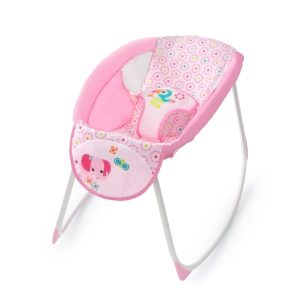
Kids II has recalled nearly 700,000 rocking sleepers, just two weeks after the stunning Fisher-Price recall.
There is a new and frightening warning out about infant sleepers. This time, families are being urged to stop using Kids II infant rocking sleepers because they have been linked to the deaths of five infants. Kids II recalled its entire line of infant rocking sleepers on Friday – approximately 36 models and 694,000 individual products – just two weeks after the stunning Fisher-Price recall.
Fisher-Price recalled 4.7 million of its Rock ‘n Play sleepers on April 12, after an investigation linked the product to more than 30 deaths over 10 years. This means that combined, the two companies sold more than 5.3 million defective sleepers to unknowing families.
Kids II introduced its sleepers in March 2012. Five infants have since died while using the sleepers after rolling from their back to their stomach while unrestrained or under other circumstances.
These sleepers were sold at Target, Walmart and Toys “R” Us as well as online, with a price tag of $40-$80. Parents and grandparents who own one should stop using the Kids II sleepers and contact the company for a recall or a voucher to use toward another product. Parents can call Kids II toll-free at 1-866-869-7954 8:00 a.m.to 5:00 p.m. ET Monday through Friday or visit the company’s website.
Read the Consumer Product Safety Commission’s recall notice for a full list of the recalled sleepers. One of the models was sold with Disney branding.
In the Fisher-Price case, the Consumer Product Safety Commission and the company, which is part of Mattel, initially announced the sleeper had been linked to at least 10 deaths in early April. The company said the deaths all involved children who were 3 months or older. The company’s remedy was for parents to stop using the rocker when children turned 3 months old or became capable of turning themselves over.
Soon after began the calls for a recall. Consumer Reports and the American Academy of Pediatrics (AAP) were the leading advocates in both the Fisher-Price and Kids II sleeper recalls. Both products put children in canopy-like sleeper, which can rock to music and is highly likely to move if an infant can. The AAP warns the rocking sleepers are unsafe and create a risk for suffocation and strangulation. The academy advises that infants should only sleep on flat surfaces such as cribs or bassinets. The sleeping surface should be free of soft bedding, toys and other products.
After Friday’s recall, Consumer Reports asked the Consumer Product Safety Commission if the agency intends to recall all sleepers on the market. An agency spokesperson said it continues to actively investigate sleep products and was “reassessing the product class and hazards associated with it.” Meanwhile, Mattel has announced the Fisher-Price recall will cost the company $27.3 for the quarter ending March 31, 2019. But the recall won’t entirely remove the sleeper from homes. According to Consumer Reports, Fisher-Price sells the same product in Canada, but markets it as a “soothing seat.”
About Breakstone, White & Gluck – Boston Product Liability Attorneys
Breakstone, White & Gluck is a Boston personal injury law firm which represents individuals who have been injured by unsafe products. When a product has caused injury, there should be an investigation to determine the cause, which often falls under three categories: defective design, manufacturing error or a failure to warn consumers about the potential for injury. If someone in your family has been injured by a defective product, learn your rights. Contact our Boston product liability lawyers at 800-379-1244 or 617-723-7676 or use our contact form.
‘Tis the Season for Product Recalls and Returns
‘Tis the season to shop for holiday toys and gifts. Or to bring that product back, for a full refund or replacement?
While a record number of consumers shopped for the holidays, IKEA and Honda issued major safety recalls in November. We share an update on these recalls and continue our Project KidSafe series on toy safety.
Honda Odyssey Recall. It’s a replacement part if you own a Honda Odyssey and unfortunately, you can expect to wait.
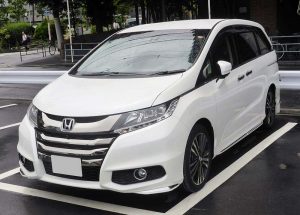
107,000 Honda Odyssey vans because of a problem with the power doors. Photo: Wikipedia.
Just in time for the Thanksgiving drive, Honda recalled 107,000 Honda Odyssey vans because the power doors may improperly latch and can potentially open while the vehicle is in operation. Honda has not received any reports of injuries.
Honda recalled vehicles from the 2018 and 2019 model years on November 20, 2018. The automaker called on drivers to request replacement power sliding door kits through an authorized Honda dealer. Replacement parts should arrive at licensed dealers in late December.
Honda advised owners they can disable the power door. Use manual operation until replacements arrive.
This is not the first recall involving Honda Odyssey vans. Last year, 900,000 Odyssey models from 2011 – 2017 were also recalled. In that case, Honda reported second-row seats could tip forward if not properly latched. Tipping could happen during moderate or heavy braking if seats were not properly latched after adjusting side-to-side or reinstalling a removed seat. Honda received 46 reports of minor injuries.
To learn more about the recalls, visit the Honda website.
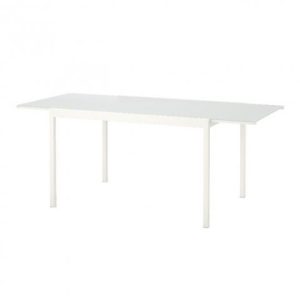
IKEA recalled these dining room tables in November 2018 because the dining surface can collapse. Return for a refund.
IKEA Tables. It is a return if you have an IKEA table. The retailer recalled 8,200 dining tables in the U.S. and 1,500 in Canada on November 27, 2018, warning the table’s glass extension leaf can detach and drop.
This has already happened three times. IKEA reports one minor injury, requiring no medical attention.
These tables sold at IKEA stores and online from February 2017 through October 2018. They sold for approximately $300. IKEA says consumers can return them for a full refund or a replacement table. Learn more on the Consumer Product Safety Commission website.
Consumer Safety Tip: Consumers do not have to wait for the news media to report unsafe products and product recalls. You can view recalls online on the CPSC website and even sign up to receive email alerts when products are recalled. Visit the toy safety page on our website to learn how to sign up.
Not every recall is the same. The CPSC can release product recalls calling for refunds or replacements. Some products can be repaired easily. Others cannot. Consumers should pay attention to all recalls. Encourage friends and family to do the same: return and refund or replacement/repair. Another option is just remove the recalled product from your home, if it can be taken apart and discarded with care, so other children cannot reuse it.
A Decade of Toy Safety Efforts, Passage of Federal Safety Legislation to Protect Massachusetts Families
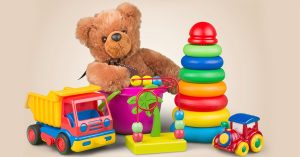 At Breakstone, White & Gluck, our Boston product liability lawyers specialize in representing those injured by defective products. Toy injuries are common, even though toys should only be safe and fun for children. It is painful to learn they can be defective or may not have been fully tested or properly labeled. Defective toys can cause serious injuries, including fingertip lacerations, burns, facial injuries and broken bones. For children under age 3, the leading hazard is toys which contain small parts and balloons which can cause choking and suffocation. Toys should be tested to see if parts can fit through the “small parts” test. Those which pass through the “small parts” cylinder should have age-appropriate warnings, which read “Choking Hazard – Small Parts. Not for Children Under 3 Yrs.”
At Breakstone, White & Gluck, our Boston product liability lawyers specialize in representing those injured by defective products. Toy injuries are common, even though toys should only be safe and fun for children. It is painful to learn they can be defective or may not have been fully tested or properly labeled. Defective toys can cause serious injuries, including fingertip lacerations, burns, facial injuries and broken bones. For children under age 3, the leading hazard is toys which contain small parts and balloons which can cause choking and suffocation. Toys should be tested to see if parts can fit through the “small parts” test. Those which pass through the “small parts” cylinder should have age-appropriate warnings, which read “Choking Hazard – Small Parts. Not for Children Under 3 Yrs.”
Among older children and teens, Hoverboards and riding toys are popular holiday gifts. These toys have injured and killed in recent years, with Hoverboards also burning down homes as the lithium ion batteries charged. Before you buy, check the CPSC’s safety standard for Hoverboards (UL2272 safety standard). Remember the standard is still new, first issued in 2016, and not an endorsement for safety. In fact, the CPSC has strongly urged consumers not to buy Hoverboards, as has W.A.T.C.H., the Boston-based non-profit which included Hoverboards on its “10 Worst Toys” lists.
Taking the time to check if a toy you want to buy – or already own – has been recalled can prevent injuries and save your loved ones’ lives. The number of toy recalls varies by year, but there are always recalls. So far in 2018, we have seen child-related recalls of dolls, toys with loose wheels, clothing, toys with excessive lead limits and go karts. In 2017, the CPSC reported 28 recalls of individual products. Over the past 10 years, 2008, 2009 and 2010 have seen the most toy recalls, with the highest number coming in 2008, when 172 toys were recalled, according to the CPSC.
This was the first year of major safety changes, including passage of the landmark Consumer Product Safety Improvement Act (CPSIA) of 2008. For the first time, toys had to be tested to ensure compliance with the law and the CPSC was granted greater authority in overseeing toy safety standards. Federal limits were also imposed on toys containing lead and other chemical hazards. In December 2008, Mattel and subsidiary Fisher Price agreed to pay $12 million to Massachusetts and 38 other states over events leading to recalls of toys with lead levels above the new federal limit.
Beyond toys, children’s products are also subject to frequent recalls, including names like Graco car seats and Britax strollers. This is a frightening fact, because these products carry children.
Breakstone, White & Gluck writes about toy safety as part of our Project KidSafe campaign, with a goal of preventing toy-related injuries. Our recent blogs:
Trouble in Toyland Report Offers Valuable Warnings For Holiday Shoppers
Hitting the Safety Brake: A Warning About Battery-Operated Ride-On Toys


